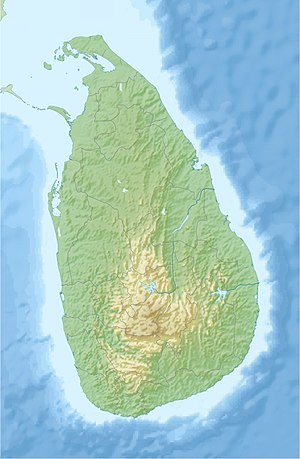1915 Ceylonese riots
| 1915 Ceylonese Riots | |||
|---|---|---|---|

Ceylon
|
|||
| Date | 28 May - 8 August 1915 | ||
| Location | Western Province and Sabaragamuwa, British Ceylon | ||
| Caused by | Attempt to prevent an attack on a Buddhist procession by Indian Moors | ||
| Methods | Widespread looting, assault, arson and murder | ||
| Lead figures | |||
|
|
|||
| Arrests/Injuries/Deaths | |||
|
Arrests: N/A Injuries: N/A Deaths: 116 (63 killed by the police/military) |
|||
The 1915 Ceylonese riots (also known as the 1915 anti-Muslim riots or the 1915 Buddhist Mohammedan riots or the 1915 Sinhalese Muslim riots) was a widespread and prolonged ethnic riot in the island of Ceylon between Sinhalese Buddhists and the Ceylon Moors and the brutal suppression of it by the British colonial authorities.
The riots started in Kandy in the night of 28 May 1915 and spread to neighbouring villages on 30 May and to Colombo on 31 May and other towns there after. It was suppressed by 9 June with final incidents taking place on 11 May in Chilaw. Taking place at a time World War I was raging in Europe, the British feared the riots as a possible native upraising, martial law was first declared in the Western and Sabaragamuwa Provinces on 2 June, extended to other provinces in the following days, and terminated on 30 August, during which many summary executions and other atrocities where carried out by the colonial forces in attempts to subdue the riots.
By the turn of the 20th century, Ceylon was a British colony. Since its last native kingdom, the Kingdom of Kandy was annexed to the British Empire, the island saw little conflict as in the century that past only two anti British uprisings (the Uva Rebellion and the Matale Rebellion) took place. Due to the relative peaceful nature of the colony, the last regular British Army regiment was withdrawn from the island in 1881. Since then the Ceylon Police Force maintained law and order in the island. British military presence in the island was limited to a regular British Indian Army infantry regiment which would be circulated to Ceylon to supplement the garrison units that was made up of a company from the Royal Garrison Artillery, the Royal Engineers and other support units of the British Army. In addition the Ceylon Volunteers functioned as a volunteer reserve.
...
Wikipedia
